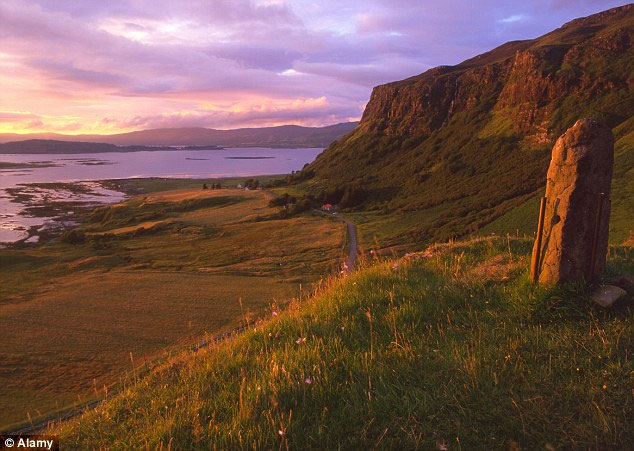Can capture CO2?
Scientists have just officially launched an ambitious experiment: pumping and burying 80-800kg of CO 2 into seabed sediments every day, hoping to improve the current global climate change situation. .
>>>Spending $ 1 billion to build the world's largest CO2 collection room
The Ardmucknish Bay Area in Benderloch, Scotland has been selected to pilot this 'world salvation' technology, DailyMail reported. First, experts will find ways to 'capture' carbon dioxide in the air, then bury them harmlessly at the bottom of the sea without altering the gas nature and disturbing the marine ecosystem.

This ambitious project will be conducted in the Ardmucknish Bay area of Scotland.
If the experiment is successful, in the future heavy industries will be able to 'store' toxic emissions beneath the seabed sediments, instead of releasing them into the atmosphere today.
About 80-800kg of carbon dioxide will be pumped to the seabed every day for a month. Responsible for conducting the project are Japanese scientists, in cooperation with the Scottish Marine Science Association. Some other partners will be responsible for investigating the potential impacts of this carbon capture on marine ecosystems.
One of their important tasks was to predict what would happen when carbon dioxide leaks from the pipeline or 'detention' location and dissolves into the sea and sea.
They will simulate such a leak by pumping CO2 from gas tanks located at North Ledaig Caravan Park to a geological area 10 meters from the seabed and 350 meters from Ardmucknish bay shore.
Lead researcher Dr. Henrik Stahl estimates carbon will take about 10 days to move from the 'captive' location to the sediment. The tracking device will detect any impact of the experiment on marine flora and fauna from the microbial level upwards.
After that, they will spend the next 90 days observing how quickly the resilient environment is, DailyMail said.
- Take screenshots using Capture XT v2
- CO2 capture from the air is not feasible
- ACA Capture Pro - Convenient computer screen capture tool
- CO2 capture technology is not commonly used
- The robot can capture objects at high speeds
- NASA wants to 'capture' meteorites as a space station
- NASA tossed a fake video of
- New material captures CO2
- New material to collect CO2 is extremely effective
- How to take photos when watching videos using Windows Media Player
- Egypt launches the pyramid project with a radar scanner
- The secret to successfully shooting the penalty of the goalkeeper
 Is the magnetic North Pole shift dangerous to humanity?
Is the magnetic North Pole shift dangerous to humanity? Washington legalizes the recycling of human bodies into fertilizer
Washington legalizes the recycling of human bodies into fertilizer Lightning stone - the mysterious guest
Lightning stone - the mysterious guest Stunned by the mysterious sunset, strange appearance
Stunned by the mysterious sunset, strange appearance